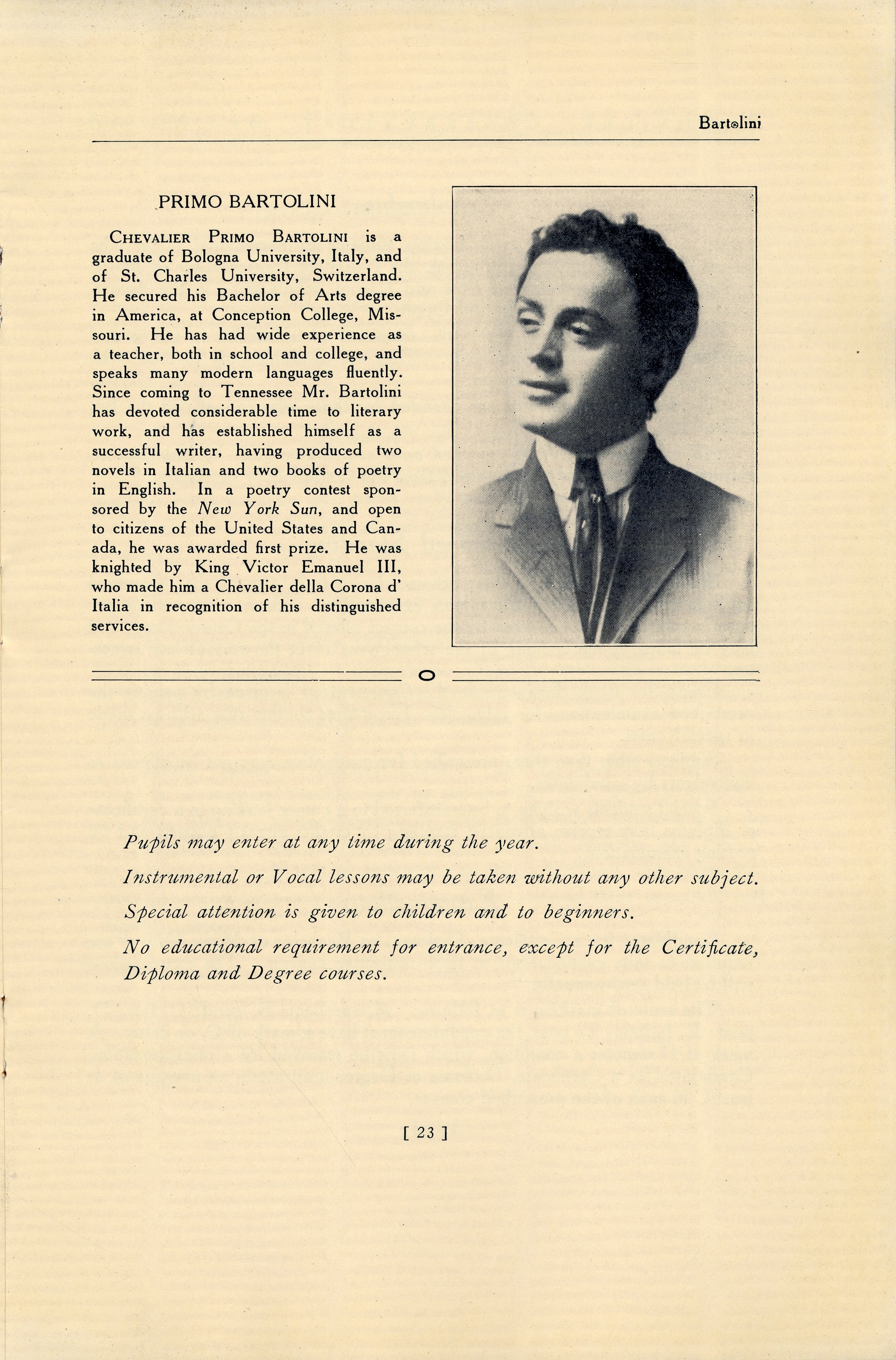
Among the founders of the Nashville Conservatory of Music, directed by fellow Italian Gaetano Salvatore De Luca, Cavalier Bartolini was now regarded as a leading scholar in the South.



From 1918, the director of Ward-Belmont School of Music Voice Department was Gaetano Salvatore de Luca. Born in southern Italy in 1882, the confident, mustachioed dandy who wore spats and spoke quickly with an Italian accent, took voice training in Milan before leaving Italy for the United States. He went on to perform and teach in Mt. Vernon, New York and then he ventured to Nashville. In the “Athens of the South”, De Luca was very successful both at maintaining a full cohort of students at Ward-Belmont and in staging high-impact operatic performances, such as Mascagni's Cavalleria Rusticana, presented in 1927 at the Ryman Auditorium.
In 1928, De Luca joined with artistically inclined public figures to found the Nashville Conservatory of Music. Its powerful board bought and equipped two adjacent mansions at 2120 and 2121 West End Avenue to serve as the school’s headquarters.

The school opened in September 1928 with de Luca announcing an enrollment of two hundred students. Nashvillians enthusiastically welcomed the conservatory, which boasted a talented, international faculty.
The conservatory awarded both two-year certificates and four-year diploma degrees and offered courses in dance, dramatic art, modern languages, piano, voice, violin, organ, and cello. In 1930, the Conservatory was one of the few schools certified in the South by the National Association of Schools of Music, and was able to attract hundreds of students from a number of states.
The Nashville Conservatory of Music began to fail as the Great Depression progressed. Potential students could not afford tuition, wealthy supporters could no longer donate, and the endowment was inadequate to finance its debt and operation. Additionally, De Luca was diagnosed with a brain tumor in 1930. Having refused surgical treatment, he died on June 19, 1936. The conservatory financially collapsed that same year.


